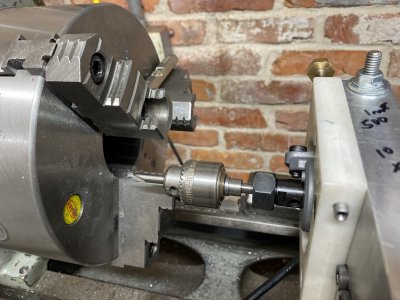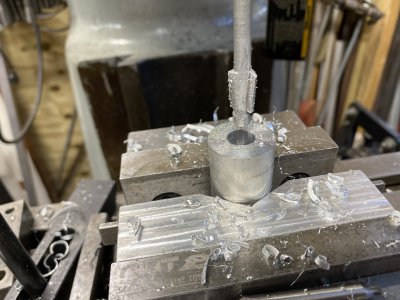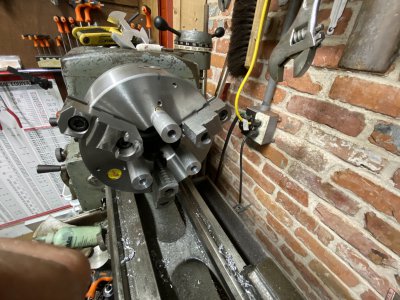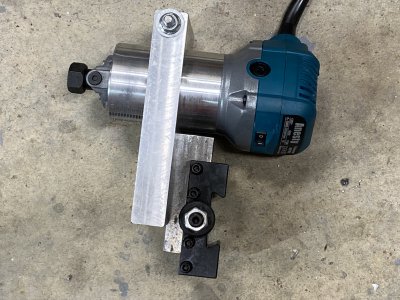- Joined
- Jul 29, 2014
- Messages
- 2,846
I ran out of tool holder nests and had to add a second story. I am trying to practice rapid setup, smooth flow, accurate assembly and thorough cleanup, and this project seemed to go well, took about three hours start to finish. So, here goes: Most woodworking equipment is on wheels, so I can remove the car and use one of the three bays to set up a production line as the project requires. For the tool holder, I used some excellent cherry ( I have a couple thousand board feet of mainly rough sawn 5/4 by 8‘ to 10’) so took a couple planks, I jointed two sides, 8” helical Powermatic, planed to thickness, Dewalt 12”, and sawed to width, Powermatic 2000. I beveled a 5’ stick on the table saw to fit the holder dovetails and chopped to length with a Skill 12” miter saw with a Freud crosscut blade. I made a sheet metal drill template on the mill for through drilling the screw holes in the horizontal support, bent up one edge as a guide, and slid that along the horizontal member and hand drilled two holes per holder position, using a bit that drills and counter sinks in one. Then I set up a fixture (fence and stop) on the drill press, (Powermatic 2800B) and predrilled two matching holes in each beveled piece. It didn’t take long to screw the dovetail pieces on the horizontal piece and with leftover pieces make two vertical brackets to position and support the top story. Cleanup was also quick because 1) the dust collector prevents too much of a mess and 2) everything has a place to live and a sequence to get it there. Then lunch and a beer.
i tell you frankly, this is uncharacteristic of how most previous projects in my life have gone. I feel I’m making progress.

i tell you frankly, this is uncharacteristic of how most previous projects in my life have gone. I feel I’m making progress.






 Sure that set up works , but soft jaws are a heck of alot easier or just make up a set of spiders .
Sure that set up works , but soft jaws are a heck of alot easier or just make up a set of spiders .


